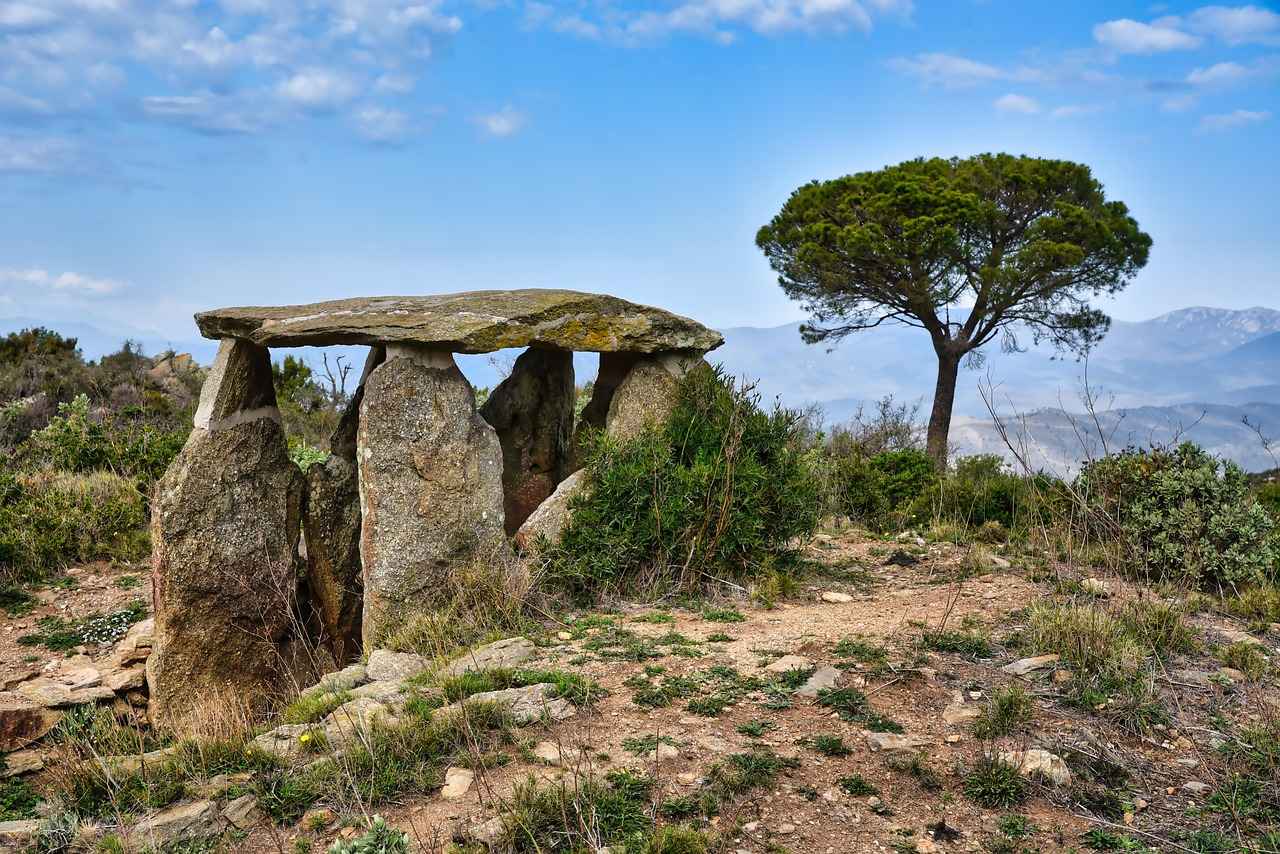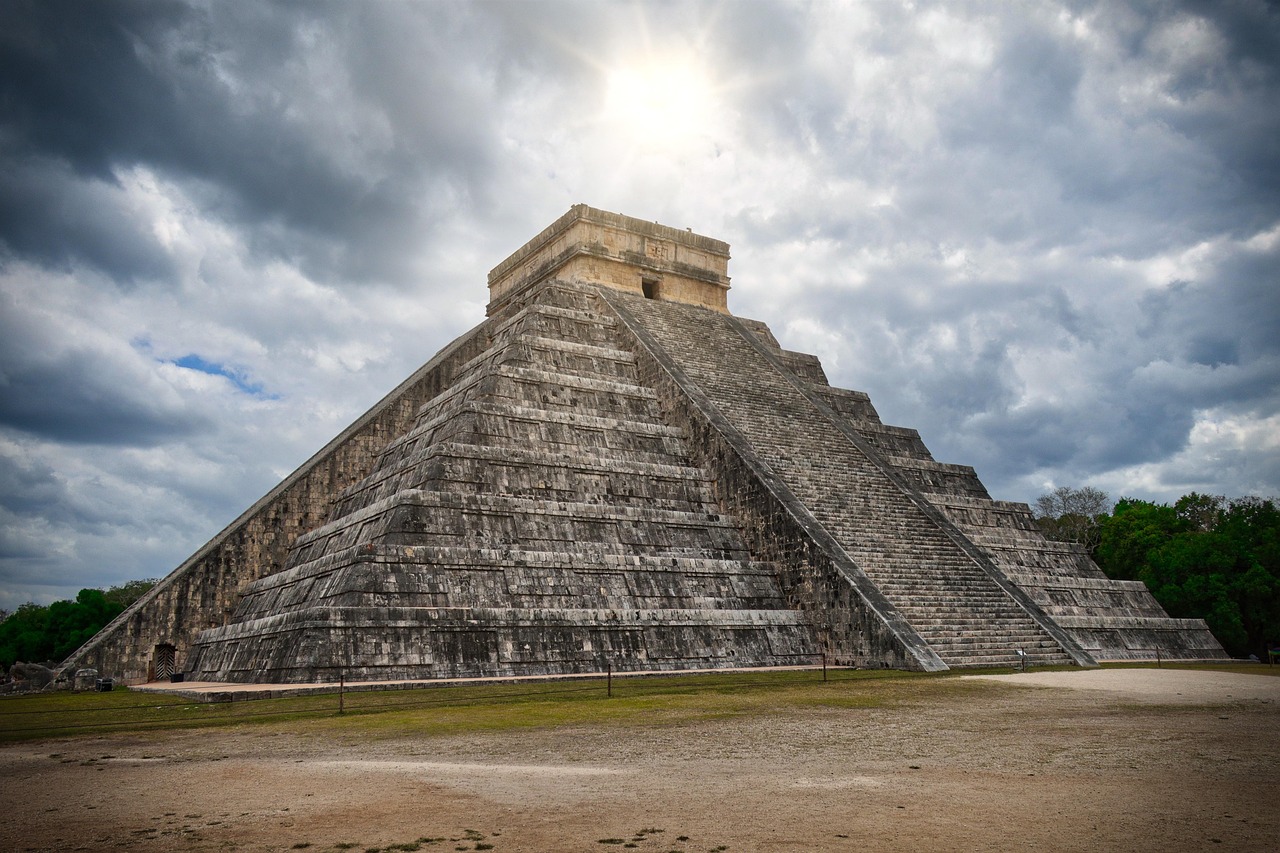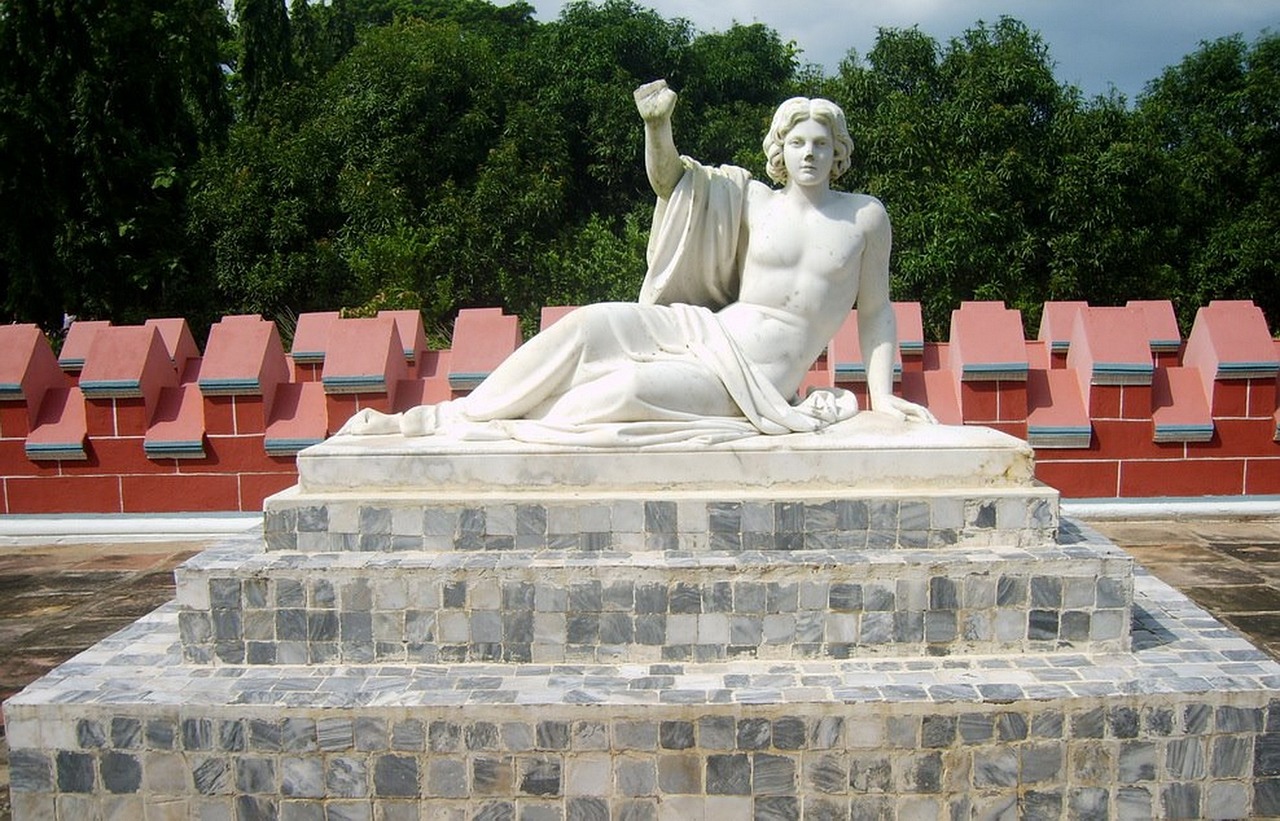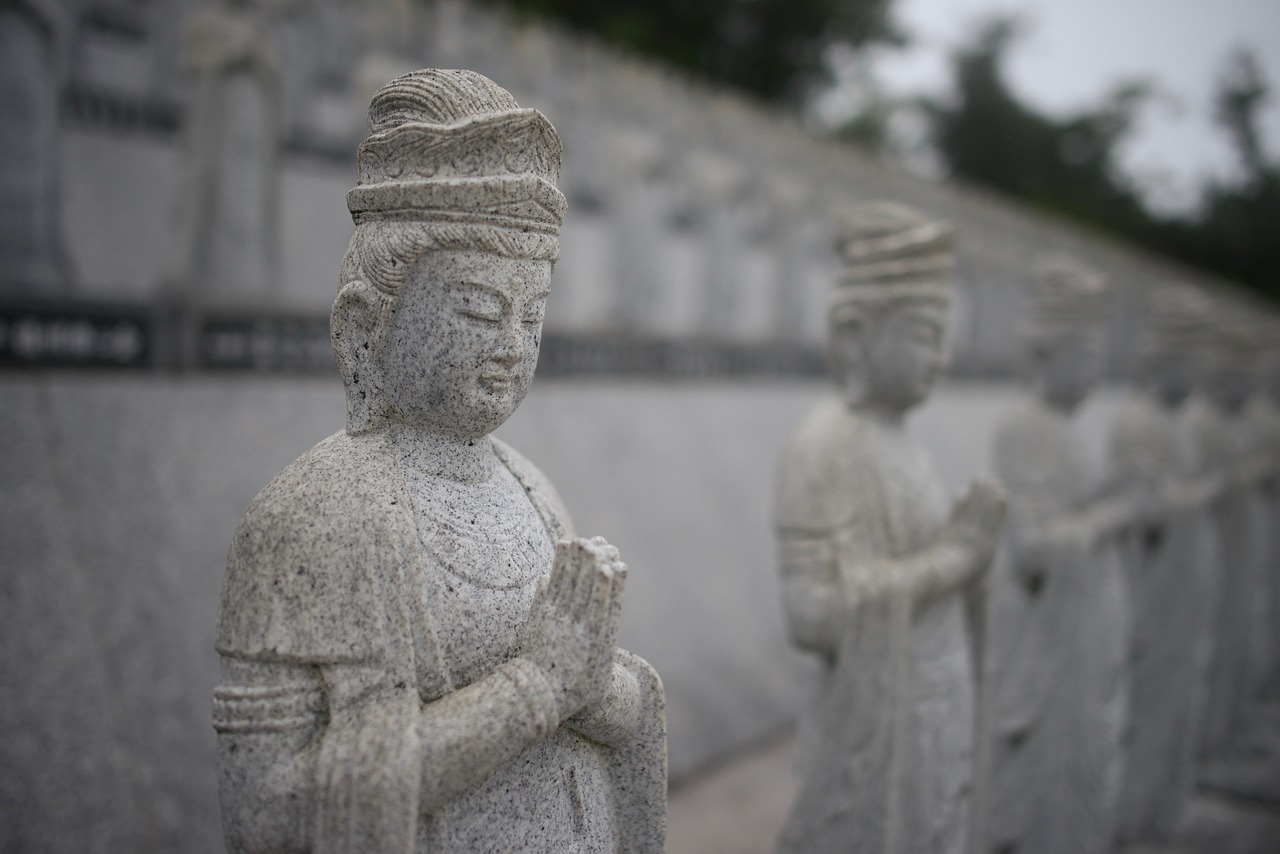This article explores the rich tapestry of Bengali dialects, highlighting the nuances between those spoken in India and Bangladesh. We aim to provide a comprehensive understanding of these variations.
Understanding Bengali Dialects
Bengali dialects are a diverse collection of linguistic forms that reflect the cultural and geographical variations within the Bengali-speaking population. Each dialect bears the imprint of local traditions, customs, and even historical events that have shaped their evolution.
Historical Context of Bengali Dialects
The evolution of Bengali dialects is deeply intertwined with the history of the Bengal region. Historical events, such as the partition of Bengal in 1947, have significantly influenced the linguistic landscape, leading to distinct dialectical forms in India and Bangladesh.
Colonial Influence on Language
British colonialism had a profound impact on the Bengali language and its dialects. Policies promoting English education and administration affected language development, leading to unique regional variations.
Language and Identity
Language plays a crucial role in shaping cultural identity. Different Bengali dialects contribute to the identity of speakers, fostering a sense of belonging and community in both India and Bangladesh.
Literary Contributions
The literary heritage of Bengali dialects is rich and varied. Notable authors and poets, such as Rabindranath Tagore and Kazi Nazrul Islam, have contributed to the dialects’ evolution, enriching the cultural fabric of both regions.
Geographical Variations in Dialects
Geography significantly influences the spoken form of Bengali. Major dialectical differences can be found in various regions, with unique phonetic and lexical characteristics.
Main Dialects of Bengali in India
- Standard Bengali: Serves as the official language in West Bengal and is characterized by its formal structure.
- Chittagong Dialect: Prevalent in parts of Bangladesh, this dialect showcases unique phonetic and lexical characteristics.
Main Dialects of Bengali in Bangladesh
- Dhaka Dialect: Known for its unique expressions, this dialect is widely spoken in the capital city.
- Rajshahi Dialect: Characterized by distinct pronunciation and vocabulary, it reflects the cultural context of the Rajshahi region.
Comparative Analysis of Dialects
A comparative analysis reveals both similarities and differences between Bengali dialects in India and Bangladesh. Phonetic variations are particularly noticeable, with specific traits that distinguish Indian and Bangladeshi Bengali.
Lexical Variations: Lexical differences can reflect cultural nuances, providing insights into regional identities and how certain words and phrases differ across dialects.
The Future of Bengali Dialects
As globalization continues to influence languages, the future of Bengali dialects remains uncertain. The impact of technology and migration may lead to further evolution of these dialects, potentially blending traditional forms with modern influences.

Understanding Bengali Dialects
Bengali dialects represent a fascinating array of linguistic expressions that mirror the rich cultural and geographical diversity of the Bengali-speaking populace. These dialects are not just variations of the same language; they are living embodiments of the histories, traditions, and identities of the communities that speak them. This section will explore the historical roots and cultural significance of Bengali dialects in both India and Bangladesh.
The Bengali language, rooted in the Indo-Aryan family, has evolved over centuries, influenced by various historical and social factors. The historical context of Bengali dialects reveals much about the region’s past. For instance, the partition of Bengal in 1947 led to significant linguistic shifts, as communities were divided and new dialects emerged in response to migration and cultural exchange.
In India, dialects such as Standard Bengali and the Chittagong dialect showcase unique characteristics shaped by local customs and languages. Standard Bengali, used in formal settings, serves as a linguistic anchor, while regional dialects reflect the everyday speech of the people, rich with local idioms and expressions.
Conversely, in Bangladesh, dialects like the Dhaka dialect and the Rajshahi dialect exhibit distinct phonetic and lexical traits that highlight the cultural nuances of their respective regions. The Dhaka dialect, for instance, has absorbed influences from urbanization and modernity, making it a dynamic form of communication among the youth.
Understanding these dialects is crucial, as they not only enhance our appreciation of the Bengali language but also provide insights into the cultural identities of its speakers. Each dialect tells a story, reflecting the lives and experiences of the people who use them. As we delve deeper into the historical significance and contemporary relevance of Bengali dialects, we uncover the intricate tapestry of language that binds the Bengali-speaking world together.

Historical Context of Bengali Dialects
The historical context of Bengali dialects is a fascinating journey that reflects the region’s rich cultural heritage and tumultuous past. The evolution of these dialects is deeply intertwined with significant historical events that have shaped the linguistic landscape of both India and Bangladesh.
To understand the development of Bengali dialects, we must first consider the historical backdrop of the Bengal region. The Bengal area, which is now divided between India and Bangladesh, has been a melting pot of various cultures, religions, and languages for centuries. The influence of ancient kingdoms, colonial powers, and migrations has contributed to the diversity of dialects.
- Ancient Influences: The early forms of Bengali can be traced back to the Magadhi Prakrit and Apabhramsa, which laid the foundation for the language.
- Colonial Era: The British colonial period introduced new linguistic elements, altering the trajectory of Bengali dialects. Colonial policies often favored certain dialects over others, leading to a shift in usage.
- Partition of Bengal: The partition in 1947 created a significant divide, resulting in the emergence of distinct dialects in India and Bangladesh. This event not only reshaped the political landscape but also influenced cultural and linguistic identities.
The impact of migration and the movement of people across borders further enriched the dialects. As communities settled in new regions, they brought their linguistic traits, resulting in a blend of dialects that we see today. For instance, the influence of Urdu and Hindi on Bengali in India contrasts with the Arabic and Persian influences in Bangladesh.
In conclusion, the historical context of Bengali dialects is a testament to the region’s dynamic history. Understanding these dialects requires an appreciation of the cultural and historical forces that have shaped them over time. As we continue to explore the nuances of Bengali dialects, it becomes evident that they are not just modes of communication but also vital components of identity and heritage in both India and Bangladesh.
Colonial Influence on Language
The impact of British colonialism on the Bengali language and its dialects is a subject of significant importance. This period introduced a myriad of changes that not only affected the linguistic landscape but also reshaped cultural identities across the Bengal region. Understanding these influences is essential for grasping the evolution of Bengali as a language.
During the colonial era, the British implemented policies that prioritized English as the medium of administration and education. This decision led to a gradual decline in the use of Bengali in formal settings, which in turn affected its development. The imposition of English created a linguistic hierarchy, where English was seen as a language of power and prestige, while Bengali was often relegated to the background.
- Educational Reforms: The British established schools and universities that primarily taught in English. This shift created a divide between the educated elite, who were proficient in English, and the general populace, who continued to speak Bengali.
- Literary Developments: Despite the challenges, this period also saw a renaissance in Bengali literature. Writers like Rabindranath Tagore began to explore new themes and styles, enriching the language and its dialects.
- Regional Variations: The colonial influence led to the emergence of distinct dialects within Bengali, as different regions adapted the language based on local customs and interactions with English.
Moreover, the interaction with English introduced new vocabulary and expressions into Bengali. Many words were borrowed, particularly in fields such as science, technology, and administration. This lexical expansion has contributed to the rich tapestry of the Bengali language as it stands today.
In conclusion, the colonial influence on the Bengali language and its dialects is a complex interplay of suppression and revitalization. While British policies aimed to diminish the use of Bengali, they inadvertently sparked a literary and cultural movement that continues to shape the language’s evolution. Understanding this historical context is crucial for appreciating the modern variations of Bengali spoken in both India and Bangladesh.
Language and Identity
Language is a powerful tool that shapes and reflects cultural identity. In the context of Bengali speakers in both India and Bangladesh, the various dialects play a pivotal role in defining who they are. This section delves into how these dialects contribute to the identity of their speakers, creating a rich tapestry of cultural heritage.
The Bengali language is not monolithic; it is a collection of diverse dialects that vary significantly across regions. In India, for instance, the dialects spoken in West Bengal and Tripura exhibit distinct phonetic and lexical characteristics compared to those in Bangladesh. These differences are not merely linguistic but are deeply intertwined with the cultural narratives of the respective regions.
In Bangladesh, the Dhaka dialect is prominent, known for its unique expressions and idioms that resonate with the urban lifestyle of its speakers. Meanwhile, the Rajshahi dialect, with its own set of phonetic traits, reflects the agricultural heritage of the region. Such dialects serve as markers of identity, allowing speakers to connect with their roots and community.
In India, the Standard Bengali dialect, prevalent in West Bengal, functions as a unifying force among Bengali speakers. However, regional dialects like the Chittagong dialect showcase the rich cultural diversity within the Bengali-speaking population. This variation fosters a sense of belonging and pride among speakers, reinforcing their cultural identity.
Moreover, the impact of historical events, such as colonialism, has further shaped the evolution of these dialects. Language policies during this period influenced the way dialects developed, leading to the unique linguistic landscape we see today.
In conclusion, the dialects of Bengali not only facilitate communication but also serve as a vital component of cultural identity for speakers in both India and Bangladesh. Understanding these dialects is essential for appreciating the rich cultural heritage they represent.
Literary Contributions
The literary heritage of Bengali dialects is rich and varied, showcasing a vibrant tapestry woven through the contributions of numerous authors and poets. This section will spotlight some of the most notable figures who have played a pivotal role in the evolution of these dialects across both India and Bangladesh.
In India, the literary scene has been significantly shaped by the works of Rabindranath Tagore, the first non-European Nobel laureate in Literature. His poetry and songs, often written in the Standard Bengali dialect, have transcended geographical boundaries, influencing generations of writers and poets. Another prominent figure is Jibanananda Das, whose unique style and use of regional dialects have enriched Bengali literature, providing a voice to the nuances of rural life.
Across the border in Bangladesh, the literary contributions are equally profound. Kazi Nazrul Islam, known as the National Poet of Bangladesh, infused his works with revolutionary spirit and employed various dialects to resonate with the common people. His poetry not only reflects the socio-political landscape of his time but also celebrates the cultural diversity of the Bengali language.
The Chittagong dialect, known for its distinct phonetic features, has also inspired many local poets who have captured the essence of their surroundings in their writings. The works of Shamsur Rahman, who wrote in this dialect, have played a crucial role in documenting the cultural heritage of the Chittagong region.
In summary, the literary contributions to Bengali dialects from both India and Bangladesh highlight the dynamic interplay between language and culture. These authors and poets not only enrich the literary landscape but also serve as custodians of the dialects, ensuring their evolution and relevance in contemporary society.
Geographical Variations in Dialects
The Bengali language, rich in its heritage and diversity, exhibits a variety of dialects shaped significantly by geographical factors. This section aims to explore the major dialectical differences found across various regions of India and Bangladesh, emphasizing how local culture and environment influence the spoken form of Bengali.
In India, particularly in the state of West Bengal, the dialects are heavily influenced by the region’s history and social structure. The Standard Bengali, often referred to as Bengali, is primarily spoken in urban areas like Kolkata. This dialect is characterized by its formal structure and is the basis for education and media. In contrast, rural areas often feature dialects such as Rarhi and Shudho, which incorporate unique phonetic and lexical elements.
Moving to Bangladesh, the dialects exhibit their own distinct characteristics. The Dhaka dialect, prevalent in the capital, is known for its unique intonations and vocabulary, reflecting the urban lifestyle and modern influences. Meanwhile, the Chittagong dialect stands out with its rich phonetic variations and is often considered one of the most distinct dialects in the region.
Table of Major Bengali Dialects
| Region | Dialect | Characteristics |
|---|---|---|
| India | Standard Bengali | Formal structure, used in education and media |
| India | Rarhi | Unique phonetic elements, rural influence |
| Bangladesh | Dhaka | Urban vocabulary, modern expressions |
| Bangladesh | Chittagong | Rich phonetic variations, distinct cultural identity |
Understanding these geographical variations is essential for appreciating the cultural richness of the Bengali language. Each dialect not only represents a linguistic form but also embodies the history, traditions, and identity of its speakers. As we delve deeper into the complexities of these dialects, it becomes clear that geography plays a pivotal role in shaping the language’s evolution.

Main Dialects of Bengali in India
India is a linguistically rich country, and among its many languages, Bengali stands out with a variety of distinct dialects. Within the Indian states of West Bengal and Tripura, these dialects reflect the unique cultural and historical contexts in which they have developed. In this section, we will explore the primary Bengali dialects spoken in these regions, highlighting their characteristics and significance.
- Standard Bengali: This is the official form of the language and is widely used in education, media, and formal communication in West Bengal. It is characterized by its standardized grammar and vocabulary, which serve as a common ground for speakers from different regions.
- Varieties of Bengali in West Bengal: Within West Bengal, several regional dialects exist. For example:
- Calcutta Bengali: Known for its distinct accent and usage of slang, this dialect is prevalent in the urban areas of Kolkata.
- Rural Bengali: In rural areas, the dialect may include unique words and phrases that reflect local customs and traditions.
- Tripuri Bengali: In Tripura, Bengali is influenced by the indigenous languages of the region. This dialect incorporates elements from local languages and has its own phonetic variations, making it distinct from the Bengali spoken in West Bengal.
The evolution of these dialects is closely tied to the historical and cultural contexts of their speakers. Factors such as migration, trade, and colonial history have all played a role in shaping the linguistic landscape. Furthermore, the cultural identity of Bengali speakers is often expressed through their dialects, which carry the weight of local traditions and narratives.
In conclusion, the primary dialects of Bengali spoken in India showcase the linguistic diversity and cultural richness of the region. Understanding these dialects not only enhances our appreciation for the Bengali language but also highlights the intricate connections between language, culture, and identity.
Standard Bengali
is recognized as the official language of West Bengal, India, and serves as a vital medium of communication in various spheres of life, including education, government, and media. This standardized form of the language is based on the dialect spoken in the Kolkata region and is characterized by its distinct phonetics, vocabulary, and grammar.
One of the most notable features of is its emphasis on clarity and uniformity, making it easily understandable across different regions. In contrast, regional dialects, such as Rajbanshi or Chittagong, exhibit significant variations in pronunciation, vocabulary, and expressions. For instance, while Standard Bengali employs a more formal lexicon, regional dialects often include local idioms and slang that reflect the culture and traditions of their speakers.
Furthermore, the grammatical structure of Standard Bengali is streamlined compared to some regional dialects. This makes it the preferred choice for formal writing and communication. In educational institutions, Standard Bengali is taught as the primary language, ensuring that students across West Bengal receive a consistent linguistic foundation.
Another aspect that differentiates Standard Bengali from its regional counterparts is the influence of historical and social contexts. The evolution of dialects has been shaped by various factors, including migration, trade, and cultural exchanges. For example, the Chittagong dialect incorporates elements from neighboring languages, providing a unique flavor that is distinct from Standard Bengali.
In conclusion, while serves as a unifying language for the Bengali-speaking population, it is essential to acknowledge the rich diversity of regional dialects that contribute to the cultural tapestry of Bengal. Understanding these differences not only enhances linguistic appreciation but also fosters a deeper connection to the heritage and identity of Bengali speakers.
Chittagong Dialect
The Chittagong Dialect is a fascinating linguistic variant of the Bengali language, predominantly spoken in the southeastern region of Bangladesh, particularly in the Chittagong Division. This dialect is not only a means of communication but also a vital part of the cultural identity of the Chittagong people.
One of the most striking features of the Chittagong dialect is its distinct phonetic characteristics. For instance, the pronunciation of certain consonants and vowels can differ significantly from Standard Bengali, making it unique. Words that are common in Standard Bengali might have entirely different pronunciations or even meanings in the Chittagong dialect. This phonetic diversity enriches the overall tapestry of the Bengali language.
Additionally, the dialect is known for its lexical uniqueness. Many words used in the Chittagong dialect are borrowed from various languages, including Arabic, Persian, and even English, reflecting the region’s historical interactions and trade relations. This lexical diversity not only adds depth to the language but also showcases the cultural influences that have shaped the Chittagong region over the centuries.
The cultural significance of the Chittagong dialect cannot be overstated. It serves as a marker of identity for its speakers, fostering a sense of belonging among the community. Traditional songs, folklore, and literature are often expressed in the Chittagong dialect, preserving the rich heritage of the region. Furthermore, the dialect plays a crucial role in local festivals and celebrations, where it is used to convey stories and traditions.
In conclusion, the Chittagong dialect is a vibrant and essential part of Bangladesh’s linguistic landscape. Its unique phonetic and lexical characteristics, combined with its cultural significance, make it a subject worthy of exploration and appreciation. Understanding this dialect not only enriches our knowledge of the Bengali language but also deepens our appreciation for the cultural diversity within Bangladesh.

Main Dialects of Bengali in Bangladesh
Bangladesh is home to a rich tapestry of dialects that reflect the country’s diverse cultural and geographical landscape. These dialects not only enrich the Bengali language but also serve as markers of regional identity. In this section, we will explore some of the most prominent dialects spoken in Bangladesh, highlighting their unique characteristics and cultural significance.
- Dhaka Dialect: The Dhaka dialect, predominantly spoken in the capital city, is known for its distinctive phonetic qualities and unique expressions. It has evolved significantly over the years, incorporating influences from various languages and cultures. The dialect is characterized by its fast-paced speech and specific vocabulary that sets it apart from other dialects.
- Chittagong Dialect: This dialect is prevalent in the southeastern region of Bangladesh, particularly in Chittagong. It features unique phonetic and lexical traits, making it one of the most recognizable dialects. The Chittagong dialect is not only a means of communication but also a vital part of the local identity, often reflecting the rich maritime culture of the area.
- Rajshahi Dialect: Known for its distinct pronunciation and vocabulary, the Rajshahi dialect is spoken in the northwestern part of Bangladesh. This dialect has a melodic quality and is often associated with the region’s literary heritage. The unique expressions and idioms found in the Rajshahi dialect contribute to its charm and cultural significance.
- Khulna Dialect: The Khulna dialect is spoken in the southwestern region and is known for its unique intonations and vocabulary. This dialect reflects the local culture and lifestyle, with many words and phrases that are specific to the Khulna region. The dialect plays a crucial role in the everyday lives of its speakers, enhancing their sense of community.
In conclusion, the diversity of Bengali dialects in Bangladesh highlights the country’s rich cultural heritage. Each dialect carries its own history and significance, contributing to the overall linguistic landscape of the nation. Understanding these dialects not only enriches our appreciation of the Bengali language but also fosters a deeper connection to the culture and identity of its speakers.
Dhaka Dialect
The Dhaka dialect is a vibrant and essential component of the linguistic landscape in Bangladesh. Predominantly spoken in the capital city, Dhaka, this dialect is characterized by its distinct phonetic nuances and a rich array of unique expressions that reflect the city’s dynamic culture.
One of the most notable features of the Dhaka dialect is its pronunciation. The way certain vowels and consonants are articulated can differ significantly from Standard Bengali, making it easily recognizable to native speakers. For instance, the pronunciation of the letter “r” often becomes softer, and the vowel sounds may carry a distinct tone that adds to its charm.
Moreover, the Dhaka dialect is infused with local slang and colloquialisms that are not commonly found in other Bengali dialects. This linguistic richness not only enhances communication among locals but also serves as a cultural identifier. Expressions unique to Dhaka often encapsulate the city’s lifestyle, humor, and social dynamics, making the dialect a living testament to the city’s heritage.
| Feature | Description |
|---|---|
| Pronunciation | Softening of consonants, unique vowel sounds |
| Colloquialisms | Use of local slang and expressions |
| Cultural Significance | Reflects the lifestyle and humor of Dhaka |
The role of the Dhaka dialect in modern Bangladeshi culture is profound. It acts as a bridge connecting various communities within the city, fostering a sense of belonging among its speakers. As urbanization continues to shape the demographics of Dhaka, the dialect evolves, incorporating elements from different cultures and languages, which further enriches its character.
In conclusion, the Dhaka dialect is not just a means of communication; it is a cultural artifact that embodies the spirit of the city. Its unique features and expressions play a vital role in shaping the identity of Dhaka’s residents, making it an essential subject of study for linguists and cultural enthusiasts alike.
Rajshahi Dialect
The Rajshahi Dialect is a fascinating aspect of the Bengali language, primarily spoken in the Rajshahi Division of Bangladesh. This dialect stands out due to its unique pronunciation and vocabulary, which differentiate it from other Bengali dialects. In this section, we will explore its distinctive features and the cultural context that shapes its usage.
The Rajshahi dialect is marked by its melodious intonation and specific phonetic characteristics. For example, the pronunciation of certain vowels and consonants can vary significantly from Standard Bengali. This phonetic uniqueness not only adds a musical quality to the speech but also reflects the rich cultural heritage of the region.
Moreover, the vocabulary of the Rajshahi dialect includes numerous local words and expressions that may not be commonly understood by speakers of other Bengali dialects. These lexical choices often draw from the region’s history, agriculture, and daily life, providing a glimpse into the local culture. For instance, words related to traditional crafts or local cuisine are prevalent, showcasing the area’s unique identity.
| Feature | Rajshahi Dialect | Standard Bengali |
|---|---|---|
| Pronunciation | Distinctive intonation | Standardized intonation |
| Vocabulary | Local expressions | Formal expressions |
| Cultural References | Rich in local traditions | General references |
The cultural context surrounding the Rajshahi dialect is equally significant. It serves as a marker of regional identity and pride among the speakers. Festivals, local folklore, and traditional practices are often intertwined with the dialect, reinforcing its importance in everyday life. The dialect not only facilitates communication but also fosters a sense of belonging among its speakers.
In conclusion, the Rajshahi dialect is a vibrant representation of the Bengali language, embodying the region’s rich cultural heritage. Its distinct pronunciation and vocabulary not only enhance communication but also serve as a vital link to the identity and traditions of the people in Rajshahi.

Comparative Analysis of Dialects
A detailed examination of the Bengali dialects spoken in India and Bangladesh reveals both similarities and differences that are deeply influenced by cultural, geographical, and historical contexts. This analysis aims to summarize the key findings from our exploration of these dialects, offering insights into their unique characteristics.
- Phonetic Differences: One of the most striking aspects of the Bengali dialects is their phonetic variations. For instance, the pronunciation of certain vowels and consonants can vary significantly. The Chittagong dialect, for example, often emphasizes softer sounds, while the Standard Bengali dialect from West Bengal tends to have a more pronounced intonation.
- Lexical Variations: The lexicon of Bengali dialects showcases a rich diversity. Certain words may have different meanings or usages in India compared to Bangladesh. For example, the word for ‘rice’ is commonly referred to as bhath in India, while in Bangladesh, it is often called bhata. Such lexical differences not only reflect linguistic evolution but also cultural nuances.
- Grammatical Structures: There are also subtle grammatical distinctions between the dialects. While the basic structure remains similar, variations in verb conjugations and sentence formations can be observed. This is particularly evident in colloquial speech, where local expressions may differ significantly.
- Cultural Influences: The cultural context in which a dialect is spoken plays a pivotal role in its development. Festivals, traditions, and local practices often shape the language, leading to the incorporation of unique idioms and phrases that are specific to each region.
In conclusion, the comparative analysis of Bengali dialects in India and Bangladesh highlights a fascinating interplay of linguistic features that are reflective of their respective cultures. Understanding these dialects not only enriches our appreciation of the Bengali language but also fosters a deeper connection with the cultural identities of its speakers.
Phonetic Differences
Phonetic variations are indeed among the most striking differences that can be observed between dialects. In the context of Bengali, the distinctions between Indian and Bangladeshi Bengali are particularly pronounced. This section delves into the specific phonetic traits that set these two dialects apart, providing a comprehensive understanding of their unique characteristics.
One of the most notable phonetic differences lies in the pronunciation of certain vowels and consonants. For instance, the vowel sounds in Indian Bengali often exhibit a more pronounced nasal quality compared to their Bangladeshi counterparts. In Bangladesh, the short vowels tend to be more centralized, leading to a softer sound that can be quite distinct from the sharper tones found in Indian dialects.
Furthermore, the consonant clusters in Indian Bengali are frequently more complex, featuring a variety of aspirated and unaspirated sounds. In contrast, Bangladeshi Bengali tends to simplify these clusters, resulting in a more fluid pronunciation. This simplification can be observed in the way words are formed and articulated, often leading to a smoother flow in conversation.
Another significant phonetic trait is the use of intonation and stress patterns. In Indian Bengali, the stress typically falls on the last syllable of a word, while in Bangladeshi Bengali, the stress is more evenly distributed across syllables. This difference can affect the overall rhythm and musicality of the spoken language, making conversations sound quite different depending on the dialect.
To summarize, the phonetic variations between Indian and Bangladeshi Bengali are not merely academic observations; they reflect the rich cultural and historical contexts of the speakers. Understanding these differences enhances our appreciation of the Bengali language as a whole, showcasing its diversity and depth.
Lexical Variations
between the Bengali dialects of India and Bangladesh serve as a fascinating lens through which we can understand the cultural nuances embedded within each region. These differences are not merely linguistic; they reflect the diverse histories, traditions, and identities of the Bengali-speaking populations.
In India, the Bengali dialects are influenced by regional languages and cultures, leading to unique lexical choices. For example, the word for “father” is often “baba” in standard Bengali, but in certain Indian dialects, it may be referred to as “baba” or “baba”, showcasing subtle variations that indicate local influence.
Conversely, in Bangladesh, the same term may also be “baba”, yet the context and usage can differ significantly. For instance, in the Dhaka dialect, affectionate terms are frequently used, reflecting the close-knit family structures prevalent in Bangladeshi society.
Furthermore, certain phrases that are commonplace in one region may be entirely absent in another. For example, the phrase “kemon aso?” (How are you?) is commonly used in both regions, but the responses and conversational flow can vary, highlighting the social dynamics at play.
These lexical differences extend to expressions of everyday life, food, and cultural practices. For instance, while the word for rice is “bhat” in both dialects, the way it is prepared and consumed can differ, leading to unique culinary terminologies that reflect local customs.
In conclusion, exploring the lexical variations between Bengali dialects not only enriches our understanding of the language but also offers valuable insights into the cultural identities of the speakers. These differences are a testament to the vibrant tapestry of Bengali culture, shaped by history, geography, and social interactions.

The Future of Bengali Dialects
As the world becomes increasingly interconnected, the future of Bengali dialects faces numerous challenges and opportunities. This section examines how technology and migration are reshaping the evolution of these dialects, influencing their usage and preservation.
Globalization has led to a greater exchange of cultures and languages, which can dilute local dialects but also enrich them. The impact of technology cannot be overstated. With the rise of social media and digital communication, younger generations are more exposed to a variety of languages and dialects. This exposure often results in the adoption of new words and phrases from other languages, leading to a gradual transformation of traditional Bengali dialects.
Furthermore, the proliferation of mobile applications and online platforms has made it easier for speakers of different dialects to connect. This connectivity fosters a blending of dialects, as individuals share their linguistic nuances through text, voice, and video. However, this mixing can also lead to the erosion of distinct dialectal features, as younger speakers may prioritize a more standardized form of Bengali over their local dialects.
Migration plays a significant role in this linguistic evolution as well. As people move for work or education, they bring their dialects with them. This migration creates a melting pot of linguistic influences, particularly in urban areas where diverse populations converge. Consequently, new dialectal forms may emerge, characterized by a mixture of local and foreign elements.
In conclusion, the future of Bengali dialects is a complex interplay of preservation and change. While technology and migration present challenges to the purity of these dialects, they also offer opportunities for growth and adaptation. As speakers navigate this evolving landscape, the resilience of Bengali dialects will be tested, shaping their identity for generations to come.


























































